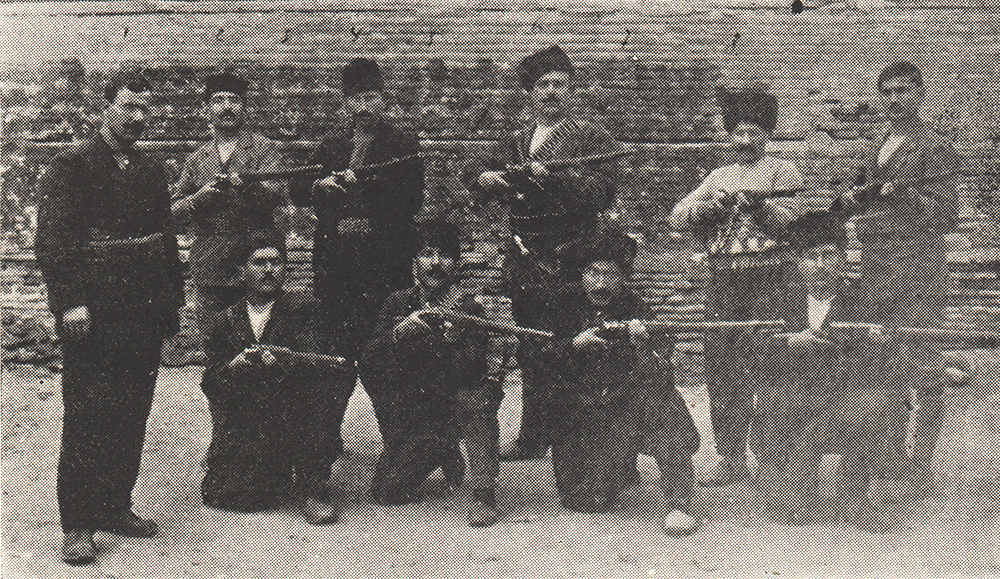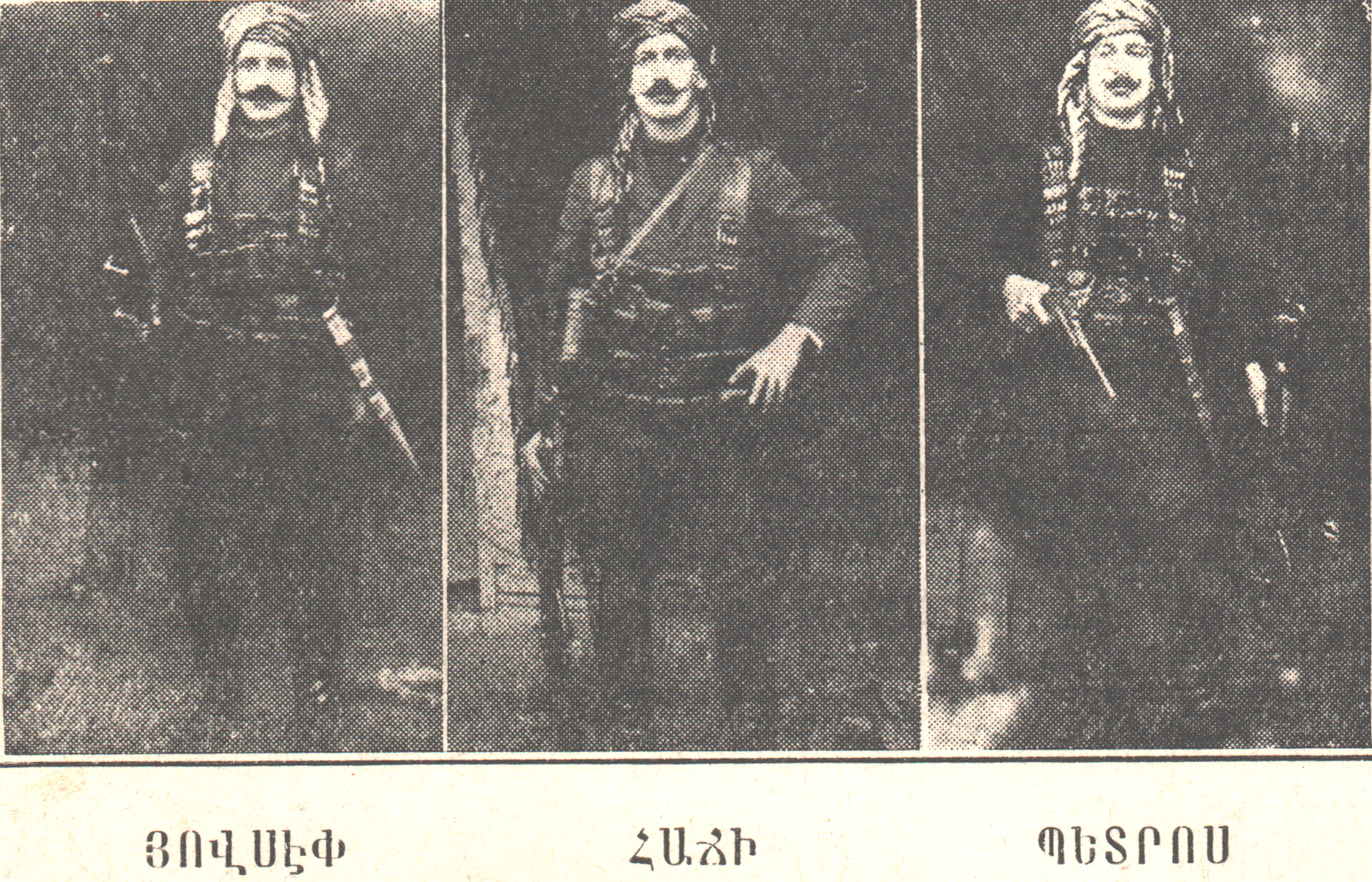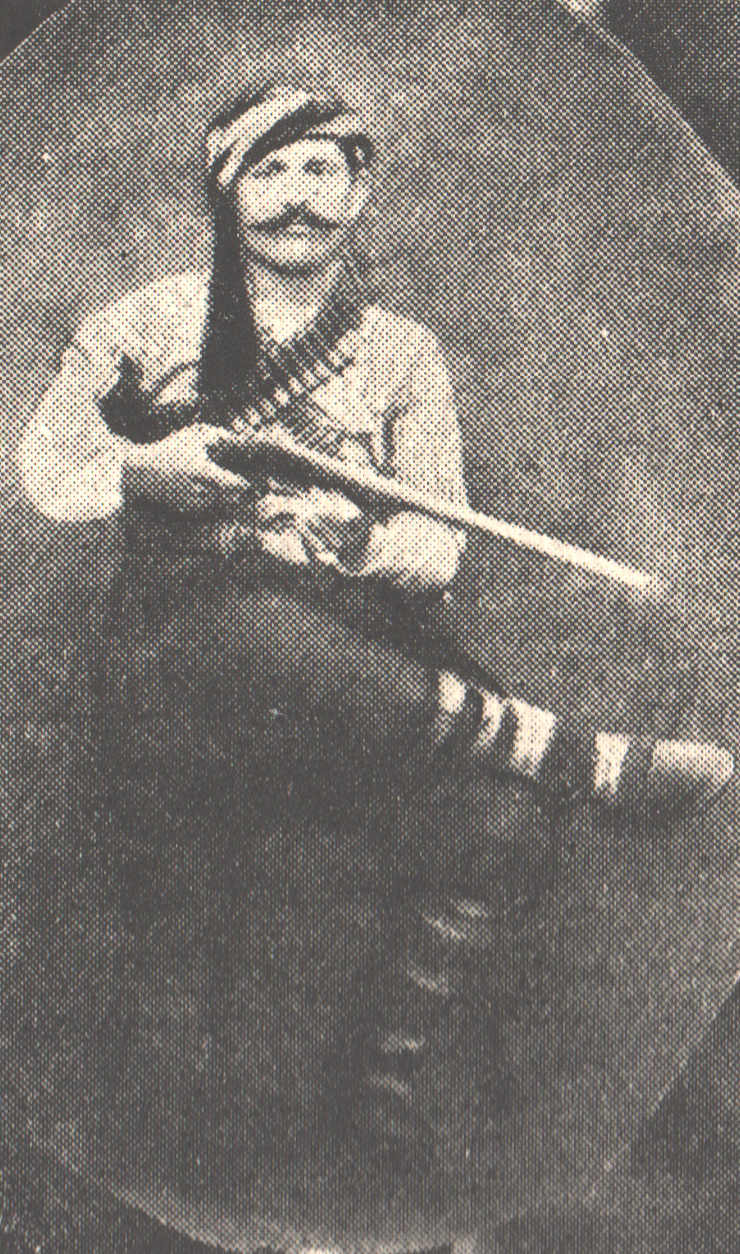31.01.2018
 A group of fighters, participants of
A group of fighters, participants of
Marash self-defense, 1920
Galustyan H. G., Marash or Germanik and
Heroic Zeytun, New York, 1934
Marash was one of the densely-populated and rich cities of historic Cilicia. Before the Armenian Genocide it had about 40.000 Armenian population, which was engaged in crafts, trade and agriculture.
In 1915 Marash Armenians were deported from their native city, many of them were massacred during deportation.
A part of Armenians (about 25.000 people) that had been deported from Marash in 1915 and legionaries who had fought in French army, returned to city after the defeat of Turkey in WWI and the conclusion of Mudros Treaty in October 30, 1918, as soon as the Turks left Cilicia.
With the extension of Kemalist-nationalist movement Turkish authorities started devising plans for removing French garrison from Marash at the point of bayonet and massacring Armenian population of the city. In order to carry out those plans Turkish authorities first armed local Muslim mobs, instilled hatred against Marash Armenians by organizing constant disturbances.
On January 1, 1920 Kemalist forces attacked unexpectedly causing considerable losses to the French garrison. The fire caught as a result of continuous shelling of Armenian quarter was used by Turks to burn Armenians sheltered in churches and institutions. The situation became even more dreadful when Turkish forces attacked the Armenian quarter with inflammable scraps dipped into oil and attached to poles and set Armenian houses to fire. Under such circumstances the irresolute and uncertain position of French command made the Armenians to resort to self-defense in separate districts of the city. Fierce battles took place especially in the vicinities of St. Sargis, St. Karassun Mankants and St.
Astvatsatsin Churches, where a small number of Armenian legionaries and Marash Armenians, armed with a few dozens of old arms, tried to defend the lives of thousands of Armenians sheltered in those churches. Sargis Margaryan, Sedrak Khrlakyan, brothers Hovsep, Hachi and Peter Havachyan, Aram Samuelyan, Minas Hambaryan, Stephan Aghasaryan and others stood out for their heroic deeds during the 20-day struggle.
Eventually, the ignominious decision of French command made in the evening of February 10 to leave Marash had an irretrievable consequence for local Armenian population. A few thousand Armenians managed to leave the city with the French garrison, some of them died from harsh winter cold, starvation and diseases while retreating to Kilis. The small number of defensive groups was unable to withstand Turkish prevailing forces. On February 11 thousands of Armenians gave in and fell victims of Turkish atrocities.
Marash self-defense is one of the heroic pages of the struggle of Armenian people against Turkish criminals.
Seda Parsamyan, AGMI Researcher

A panoramic view of Marash(1900s, postal card)
Armenian Genocide Museum-Institute

Brothers Hovsep, Hachi and Peter Havanchyan, ensured the security of about 2000
Armenians sheltered in Sheikh district, 1920
Galustyan H. G., Marash or Germanik and Heroic Zeytun, New York, 1934

Aram Chaush Samuelyan, participant of Marash self-defense
Galustyan H. G., Marash or Germanik and Heroic Zeytun, New York, 1934

Minas Chaush Hambaryan, participant of Marash self-defense
Galustyan H. G., Marash or Germanik and Heroic Zeytun, New York, 1934





